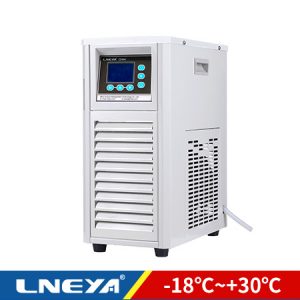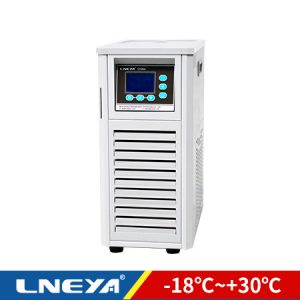What is the heat transfer principle of the chiller cooling system?
Fluid connection indirect cooler is a cooler that connects two surface coolers by the heat carrier circulating in them. The heat carrier circulates between the high temperature fluid cooler and the low temperature fluid, receives heat in the high temperature fluid, and releases heat to the low temperature fluid in the low temperature fluid cooler.
The direct contact FL-800N -18°C ~ +30°C Малогабаритный охладитель воды is a kind of equipment where two kinds of fluids directly contact for heat exchange.

The surface cooler is a kind of fluid with different temperature flowing in the space separated by the wall, and heat transfer between the two fluids is carried out through wall heat conduction and fluid convection on the wall.
The cooler transfers heat from high temperature fluid to low temperature fluid through the heat storage body composed of solid materials. The hot medium first heats the solid materials to a certain temperature, and then the cold medium is heated through the solid materials to achieve the purpose of heat transfer.
1. What is the working principle of the cooler cooling system?
The refrigeration compressor sucks in the low temperature and low pressure gas refrigerant from the evaporator, which is compressed into high-temperature and high-pressure superheated steam, which is discharged into the condenser.

It dissipates heat to the surrounding air and becomes a high-pressure supercooled liquid. The high-pressure supercooled liquid flows into the capillary tube through the drying filter for throttling and depressurization, which becomes a low temperature and low pressure liquid.
It enters the evaporator for vaporization, absorbs the heat of the surrounding objects to reduce the temperature to the required value, The vaporized gas refrigerant is sucked in by the compressor again, so far, a cycle is completed.
2. Composition of cooler cooling system.
The cooling system is mainly composed of radiator, cooling fan, water pump, thermostat, coolant temperature gauge, water jacket, water pipe, coolant expansion tank and coolant temperature sensor. The working principle of the cooling system is: when the engine temperature rises, the engine water cycle thermostat opens, the engine coolant enters the large cycle, and the engine drives the cooling fan to rotate for engine heat dissipation.
 ЛНЕЙЯ
ЛНЕЙЯ
 简体中文
简体中文


















































































